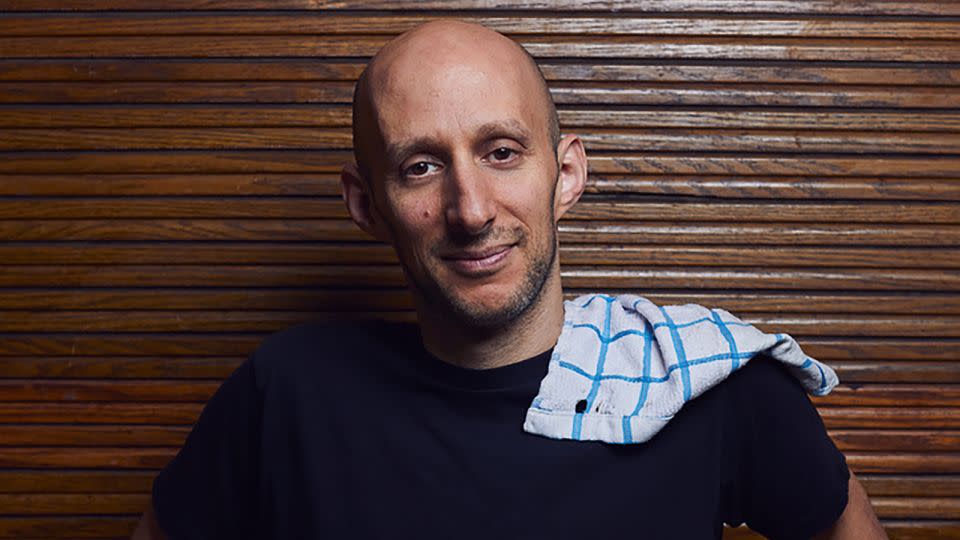Opinion: DoorDash doesn’t understand the definition of a tip
Editor’s Note: Corey Mintz, author of “The Next Supper: The End of Restaurants as We Knew Them, And What Comes After” (Public Affairs, 2021), is a freelance food reporter focusing on the intersection between business, politics, farming, ethics, land use, labor, education and culture. As a consultant, he has worked with restaurants to strategize a non-tipping model. The views expressed in this commentary are his own. View more opinion at CNN.
A new initiative by DoorDash, if successful, could redefine the meaning of tipping.

“Orders with no tip might take longer to get delivered — are you sure you want to continue?” This message is currently prompted to some customers placing an order without adding a tip. It even clarifies the potential consequences for not tipping. “Dashers can pick and choose which orders they want to do. Orders that take longer to be accepted by Dashers tend to result in a slower delivery.” (Dashers are the company’s name for those who deliver orders.)
I don’t see much ambiguity in this language. It reads like a promise and a threat, laying out the new social contract. Rather than tipping as a voluntary gift following good service, we are being asked to tip before our order (and tip well, because we’re competing with other customers), or we can expect worse service.
That’s crazy. This strategy may seem logical to some economists and technologists, to whom incentives and gamification are the solution to any question of consumer psychology. But this certainly doesn’t sound like how most Americans would describe a tip — popularly perceived as a customer’s assessment of service quality, a thank-you, a reward or a demonstration of generosity.

We must reject the madness of blind bidding for food delivery before it creeps into other areas of our lives and commerce.
For decades, tipping has been a cultural expectation baked into our hospitality experience. American diners know that the price on the menu does not represent the true price because it is assumed we will add 20% (or whatever our default is).
But if we accept DoorDash’s terms, the tip is a bid, part of a negotiation for this person’s services. To be fair to DoorDash, it is merely saying the quiet part out loud. We know that couriers can be enticed to accept a delivery based on the proposed tip (unfortunately making them vulnerable to “tip baiting,” in which customers rescind a tip or lower its amount on food delivery apps after delivery).
But it’s another matter for DoorDash to state this explicitly in an attempt to persuade customers to tip more. The language here seems intent on pushing the platform as a tool for customers to negotiate service fees from its “independent contractors” while still using a term such as “tips” in a context that bears little relation to how most restaurant customers view the term.
To me, it says the company endorses the bidding model. If you want a bowl of ramen delivered to your home, after agreeing to the price, taxes and delivery fee, you’ve got to put in an offer, then wait to see if you’ve outbid competitors you can’t see. It’s a micro version of real estate blind bidding.
At the risk of generalizing, I’m willing to say that most people do not like the blind bidding process of buying a home. Without knowing what others have offered, we estimate our borrowing limits, add our desire, multiplied by our anxiety that someone else will outbid us, and we negotiate against ourselves, offering more than we would have valued this product at to secure its acquisition.
Imagine doing that with dinner delivery, having to reassure your partner, “Honey, we made a strong offer. I feel really confident that we’re going to win these burgers.”
Let’s consider a step beyond the few additional dollars thrown into the delivery order bid to the larger tip creep implications. Tip creep is the current phenomenon of how we are being asked to tip in a wider variety of situations, at higher and higher percentages.
Recently, tip creep has pushed this expectation beyond the traditional context of full-service dining, hair salons, barbershops and cabs to incorporate bakeries, cafes, fast-food restaurants, drive-thrus and other retail environments.
So imagine all the places you are expected to tip. Now imagine this blind bidding model in place. What would it look like if this became acceptable and reservation platforms such as Resy and OpenTable adopted it? Want that dinner reservation? Place your tipping bid and find out if your offer was accepted. Not happy with the experience? Doesn’t matter. You already offered a 25% tip to nab the table.
DoorDash has framed its strategy as a test phase. “As with anything we pilot, we look forward to closely analyzing the results and feedback,” DoorDash spokesperson Jenn Rosenberg told CNN. The customers are what DoorDash will closely analyze. The results are ordering patterns, and the feedback is the public rejection or acceptance of this system.
The majority of us are already experiencing tipping fatigue. We cannot let the next stage in the march of tip creep be the acceptance of blind bid pre-tipping.
For more CNN news and newsletters create an account at CNN.com

